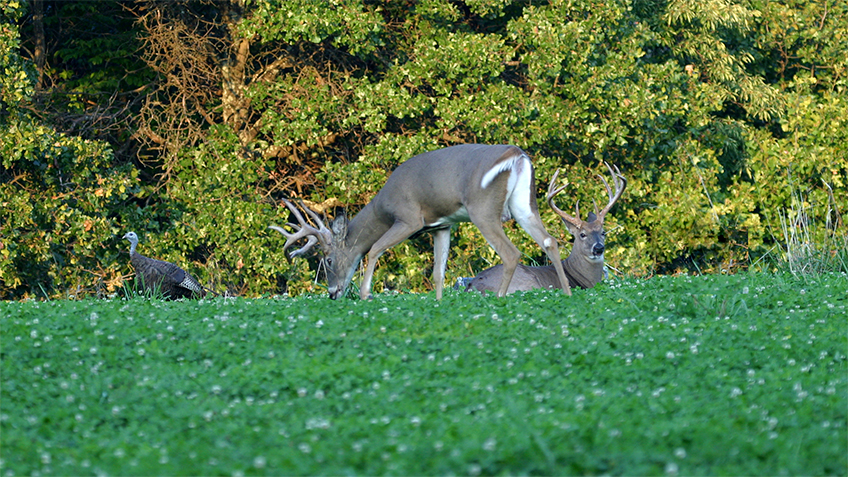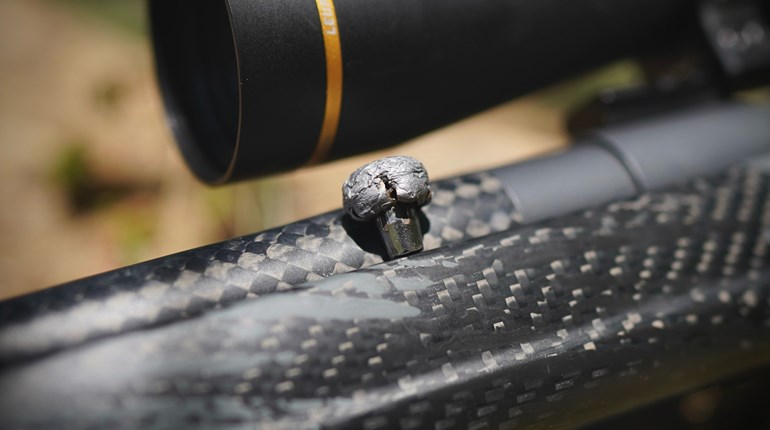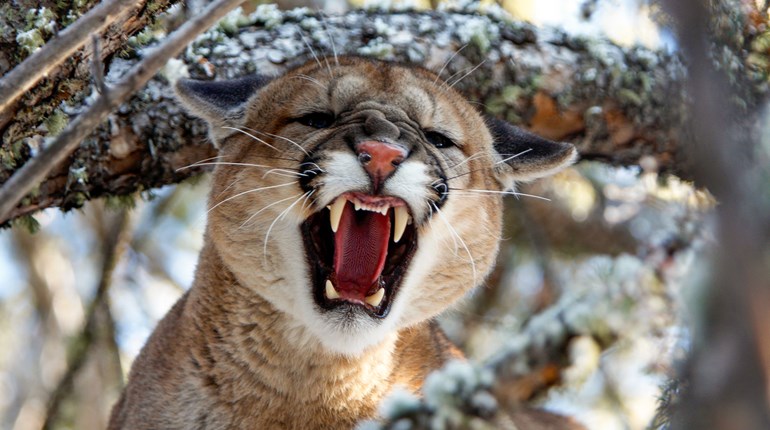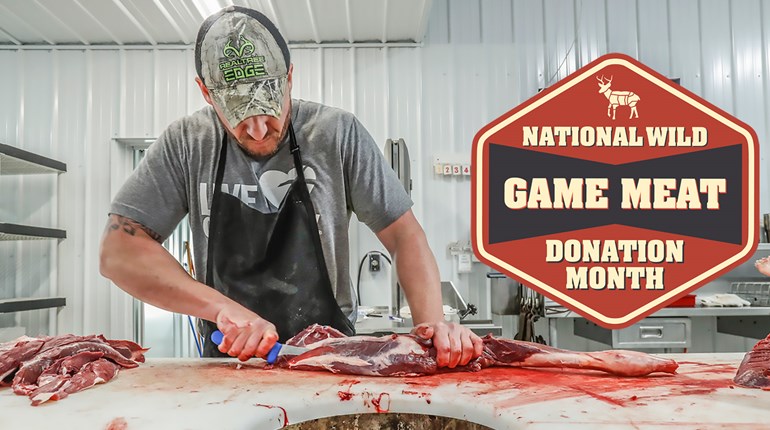
The term “food plots” is a regular part of deer-hunter conversations nowadays, a development that occurred over the course of the past three decades and for many good reasons. Food plots improve the habitat and well-being of a host of wildlife species extending beyond deer and other game. Folks who plant and maintain them step up their stake in conservation, and their commitment benefits local economies while frequently helping to increase land values. Naturally many enjoy making food plots part of their hunting strategy and indeed they are great venues for beginning hunters.
Although hard numbers are difficult to come by, the magnitude of the food-plot movement is reflected in the 2016 National Survey of Fishing, Hunting and Wildlife-Associated Recreation from the U.S. Fish and Wildlife Service. The survey reported that $1.1 billion was spent on “plantings for the benefit of wildlife.” In a 2005 poll conducted by NRA Publications, 17 percent of respondents said they cultivated food plots for wildlife. At the time NRA had 4 million members, which translates to about 680,000 food-plotters overall. More recently, other media sources have released data pegging food-plot involvement at 35 percent of those polled. If we extrapolate these findings to today’s overall deer-hunter population of 11.5 million, somewhere between 2 and 4 million hunters are active in food-plot cultivation. One way or the other, it is big business, a lot of us are taking part, and it has changed our country for the better.
The Groundwork
The food plot revolution can be traced back to Ray Scott (of BASS fishing fame), who in 1988 founded the Whitetail Institute of North America with the introduction of Imperial Whitetail Clover. Like others, Ray and his son, Steve, had been planting “green fields,” a practice dating back to the 1970s or even earlier. But a big step forward came when the owner of the local farm store threw a bag of clover seed on Scott’s truck one year, which prompted him to section off one field with a strip of wheat next to the woods, then a strip of oats, a strip of rye, a strip of clover, another strip of wheat and so on. The clover was close to the middle of the field.
Early in the season, the Scotts watched deer enter the field and walk through the various forages to feed on the clover. After taking one good buck, Ray again observed deer bypassing the other plantings for the clover. And with that, the light came on!
Convinced he’d chanced onto something important, Ray had to learn more, and so he tracked down agronomist Dr. Wiley Johnson who had developed the clover he planted. Ultimately the two men hatched a plan to develop a clover specifically for deer and food plots, and the Whitetail Institute was off and running.
Growing Like Crazy
While there was ready demand for his new venture, Ray Scott’s marketing savvy ensured hunters everywhere would soon learn about the virtues of food plots. American Hunter and many other outdoors magazines jumped to cover this promising new development. Hunting TV on cable and local channels also took notice, and eventually that progressed to shows focused on food plots and wildlife nutrition.
In the spotlight, it didn’t take long for competitors to jump on the bandwagon. Though Imperial Whitetail Clover could be successfully cultivated in most parts of the country, many early food-plot offerings were best suited to specific regions and soil types. But the competition also created a fertile environment for the development of new wildlife forages, including improved strains of alfalfa, beets, brassicas, chicory, cowpeas, lablab, sorghum, soybeans, tubers, turnips and various mixes. In time, options came forth for virtually every climate, season and soil type. Planters can now choose between annuals and perennials, between labor-intensive crops and those requiring less effort, or can plant in a rotation that covers many situations and nutritional needs.
Along the way food plots have boosted economies in rural America. In addition to seed and fertilizer, farm machinery sales have spiked—everything from tractors, ATVs, chisel plows and disc harrows to culti-packers, seed drills and sprayers. Equipment and farm supply dealers are ringing up sales, and shops have emerged in many communities to build small-scale implements and the box blinds hunters often use.
A Bumper Crop of Good
“While hunters’ main motive for investing in food plots is to attract, hold and grow better bucks, along the way something interesting happens,” explained Steve Scott. “We hear about it regularly: Our customers reach a point where they enjoy the process of planting, managing the land and improving the habitat as much or more than the hunting itself. It gives them a reason to spend more time on their land as opposed to a few weeks or months during the hunting season.
“At some point—voluntarily and at the cost of their time and money—they go all in for conservation. And that’s really just an extension, or a more advanced stage, of what American hunters do,” said Scott. “Regardless of your involvement in food plots, all hunters should be aware and proud of what we do, especially when we have to go against folks determined to shut us down.
“Anti-hunting groups raise a lot of money and make a lot of noise, but in fact do nothing to help wildlife. Hunters do plenty. Every one of us supports scientific wildlife management through our purchase of hunting licenses and permits, and then we functionally implement the on-the-ground management necessary for keeping herds and flocks healthy.
Furthermore, everyone who purchases firearms, ammunition and archery tackle helps to fund wildlife management by paying excise taxes. Amounting to $797 million in 2018, those funds were divvied among all 50 states and five U.S. territories to pay for research, law enforcement, land acquisition, habitat improvement, shooting range development and hunter safety education,” added Scott.
“Food plots can increase the availability of high-value nutrition to deer for miles around. Not only is there reduced competition for natural browse, but with access to a diet higher in protein, does give birth to healthier fawns and are able to produce more milk for them,” said Scott. “And deer aren’t the only beneficiaries. Depending on the region and the plantings, bears, turkeys, rabbits, game birds and more will use plots to meet nutritional needs. Resident and migrating song birds frequent them. Many plots provide wildlife feed when natural sources are seasonally scarce.
“If we can do a better job spreading the word about all hunters do, especially telling our side to non-hunters,” said Scott, “it will help us defeat those who want our way of life to go away. I think of all this as our ‘flak jacket’ against the anti’s, protection against their dishonest portrayals of hunters. We just need to let more people know.”
Should You Plant Food Plots?
If you’re curious about getting in on the benefits and satisfaction many other hunters receive from food plots, here are some key points.
• Big acreage is not required. Productive plots span as little as one-eighth acre.
• Some work—and in cases a substantial amount—is required to prepare the seedbed. Certain plantings, however, require little more than a vigorous raking. As is usually true, greater effort yields greater results.
• You don’t need to possess farming expertise, but should have your soil analyzed by the local agricultural extension office in order to learn how to lime and fertilize it for optimum results. Collecting and submitting samples is a simple process.
• While farming equipment may be needed to work bigger plots, relatively affordable implements are now geared for use with ATVs or even riding mowers. Access to a tractor may not be necessary.
• Food plots can be planted in both spring and fall. The time for fall planting is coming soon.
• Food-plot basics have been covered extensively via magazines, books, websites and TV/video. DIY resources are readily available. For more food-plot info, check out the following articles:
• 10 Steps to a Successful Food Plot
• Know-How: A Guide to Planting Food Plots
• Food Plot Tips to Bring in Your Best Bucks
• Miniature Food Plot Strategies
• Quick Ideas for Summer Food Plots
• Small Food Plots for Big Bucks
A New Season for Whitetail Institute
In late 2018, the Whitetail Institute was acquired by Pradco, owner of numerous well-known hunting brands.
“The timing was perfect when they approached us,” noted Whitetail Institute VP Steve Scott. “The main people running the Whitetail Institute are getting older and the time for new blood was fast approaching. One of the things I’m most excited about, besides the quality of the people with Pradco, is that they have committed to beefing up the research and development side. I look forward to seeing the Whitetail Institute flying even higher with the resources Pradco brings to the table.”
As faithful NRA supporters, Steve and everyone at the Whitetail Institute are now offering fellow NRA members an exclusive offer to try two of the most popular food plot products ever created in new larger, trial-size bags that will allow the creation of food plots big enough to evaluate and hunt over: Imperial Whitetail Clover, 5,400 square feet; and Winter-Greens, 7,200 square feet. That totals nearly one-third acre, priced at $18.49, shipping included. To order, visit: whitetailinstitute.com/NRA or call 800-688-3030, Monday-Friday 8-5 CST.





































